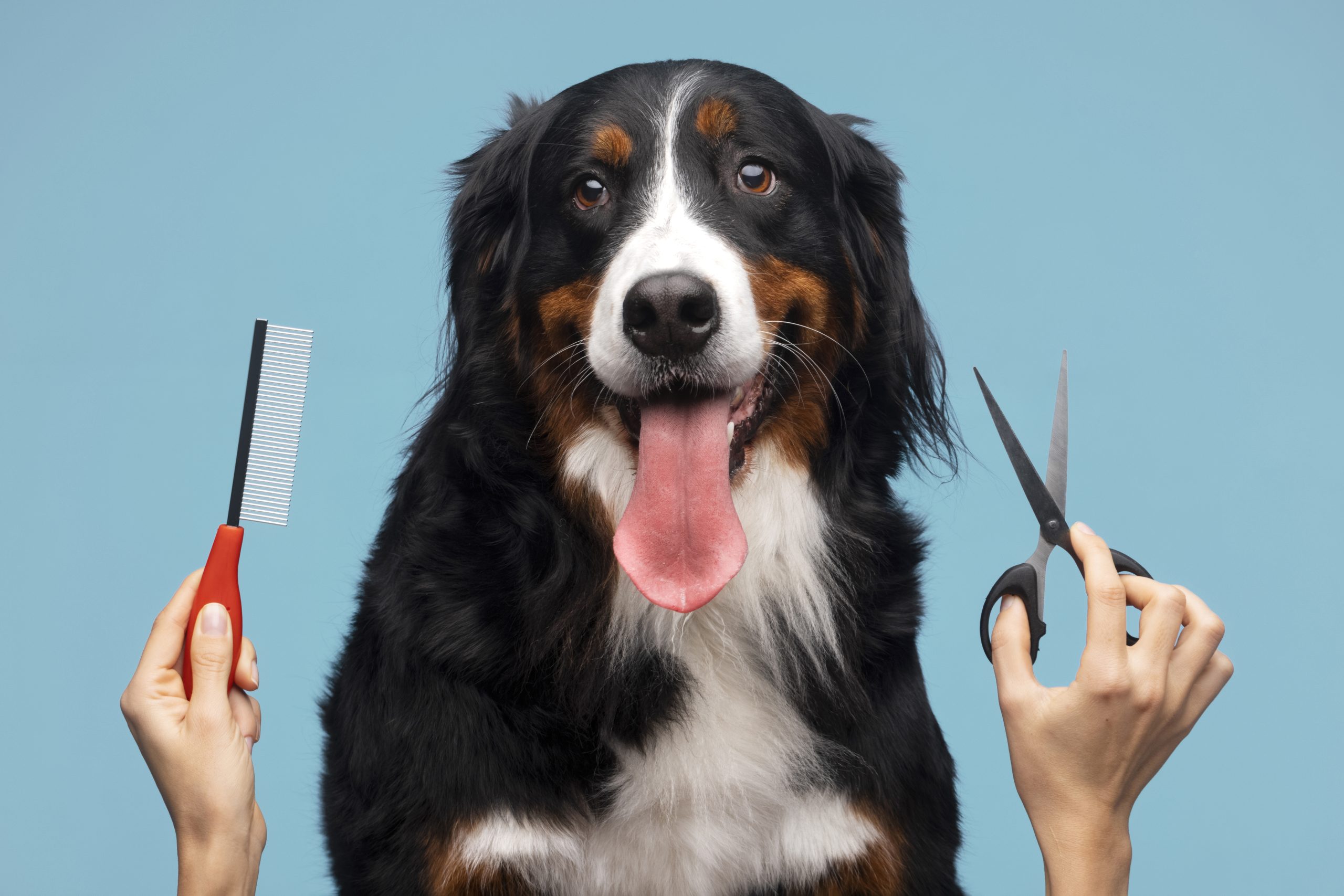Grooming your pet at home can be a rewarding and bonding experience, as well as an essential part of their overall health and well-being. With the right tools, techniques, and a bit of patience, you can keep your pet looking and feeling their best without the need for frequent professional grooming visits. Here’s your ultimate guide to pet grooming at home.
- Gather the Essential Tools
Before you start, ensure you have the necessary grooming tools for your pet’s specific needs. Common grooming tools include:
- Brushes and Combs: Different pets require different types of brushes. For example, a slicker brush for long-haired breeds and a bristle brush for short-haired pets.
- Shampoo and Conditioner: Use pet-specific products that suit your pet’s coat type and any skin sensitivities they may have.
- Nail Clippers or Grinders: Keeping nails trimmed prevents discomfort and health issues.
- Ear Cleaning Solution: Regular ear cleaning helps prevent infections.
- Toothbrush and Pet Toothpaste: Dental hygiene is crucial for overall health.
- Towels and a Blow Dryer: For drying after baths.
- Scissors and Clippers: For trimming fur, especially in long-haired breeds.
- Brushing and Combing
Regular brushing is key to maintaining a healthy coat and preventing matting. The frequency of brushing depends on your pet’s coat type:
- Short-haired pets: Brush once a week to remove loose hair and distribute natural oils.
- Long-haired pets: Brush daily to prevent tangles and mats.
When brushing, start at the head and work your way down, being gentle around sensitive areas like the belly and legs. Use a comb to check for any mats or tangles and gently work them out.
- Bathing
Bathing frequency varies based on your pet’s lifestyle and coat type. Generally, a bath every 4-6 weeks is sufficient, but more frequent baths may be needed for pets with skin conditions or who get dirty often.
- Preparation: Brush your pet thoroughly before bathing to remove loose hair and mats.
- Bathing: Use lukewarm water and a pet-specific shampoo. Avoid getting water in their ears and eyes. Lather the shampoo, starting at the neck and working your way down. Rinse thoroughly to remove all soap residue.
- Drying: Towel dry your pet and use a blow dryer on a low, cool setting if they tolerate it. Ensure they are completely dry to prevent skin issues.
- Nail Trimming
Keeping your pet’s nails trimmed prevents discomfort and potential injury. Trim nails every 3-4 weeks, or as needed.
- Tools: Use pet-specific nail clippers or a grinder.
- Process: Hold your pet’s paw firmly but gently. Trim a small amount of nail at a time, avoiding the quick (the sensitive part inside the nail). If you’re unsure, trim just the tips and consult your vet for guidance.
- Ear Cleaning
Regular ear cleaning helps prevent infections, especially in pets with floppy ears. Clean ears once a month or as needed.
- Tools: Use a vet-recommended ear cleaning solution and cotton balls.
- Process: Apply the solution to a cotton ball and gently wipe the inside of the ear flap and the ear canal opening. Do not insert anything deep into the ear canal.
- Dental Care
Good dental hygiene is vital for your pet’s overall health. Brush their teeth at least a few times a week.
- Tools: Use a pet-specific toothbrush and toothpaste.
- Process: Start slowly, letting your pet get used to the taste of the toothpaste. Gradually introduce the toothbrush, brushing in gentle circular motions.
- Fur Trimming
Some pets, especially long-haired breeds, require regular fur trimming to stay comfortable and mat-free.
- Tools: Use scissors or clippers designed for pets.
- Process: Trim around sensitive areas like the face, paws, and sanitary areas. If your pet’s coat requires extensive trimming, consider seeking professional help to avoid accidents.
- Patience and Positive Reinforcement
Grooming should be a positive experience for your pet. Use treats, praise, and gentle handling to keep them calm and cooperative. Start grooming sessions when your pet is relaxed and build up gradually, especially if they’re new to at-home grooming.
Conclusion
With the right tools, techniques, and a lot of patience, grooming your pet at home can be a fulfilling experience for both you and your furry friend. Regular grooming not only keeps your pet looking their best but also contributes to their overall health and happiness. Happy grooming!

